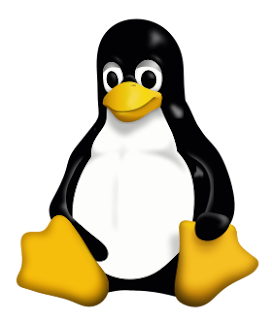Simple Linux Commands for Beginners:
 |
| Linux |
I. INTRODUCTION
Linux is the kernel of an operating system. People
who are interested in computer-based electronic systems in the name of UNIX
have certainly heard it somewhere. Linux is a UNIX clone. Linux was created by
Linus Torvalds using a language base developed by MIT called Scratch. Linux is
free and open-source software. You can share this with your own name by making
a small change on Linux. There are a lot of Linux distributors, and they are
called "distros". Some of these:
·
Ubuntu Linux
·
Red Hat Enterprise Linux
·
Linux Mint
·
Debian
·
Fedora
·
Arch Linux
·
Manjaro
Linux is usually used on servers at 90%. That's why
Linux is fast, reliable and free. The biggest problem using a Windows based
server is the price. This problem can be overcome with Linux. The world's 80%
smartphone operating system is also based on Linux. For example, the Linux
Kernel was built in Android. To give a small example of security, many computer
viruses in the world affect Windows, but it does not affect Linux.
II. LINUX SHELL “TERMINAL”
The terminal is simply a program. It takes the
commands that the users have entered and gives them to the operating system to
process. It shows the results of the commands and the output on itself. It mean
that, it is the main bridge between the operating system and the user. Linux
distributors come with a GUI (Graphical User Interface), but, Every Linux has a
CLI (Command Line Interface). In this section we will discuss the simple
commands we can use in the Linux Terminal.
There are some shortcuts to open the terminal on
Linux. "Ctrl + Alt + T" is used to open a terminal on Ubuntu Linux.
On a system with a Gnome interface, Terminal can be reached with Alt+F2 and
“gnome-terminal” commands.
III. LINUX COMMANDS
1. pwd
When we first open the terminal, it starts in the
home file of the user you are logged into. If we want to know which file we are
in, we write "pwd" command. This command shows us exactly which
folder we are, starting with roots. Root is the main base of a Linux system.
The root is indicated by an oblique line (/).
2. ls
The "ls" command is used to know which
files are in your current directory. Using "ls -a" command you can
see all hidden files.
3. cd
"Cd" is the command used to go to a
directory. For example, if you are in the Home folder and want to go to the
Downloads folder, you can type "cd Downloads". Remember that this
command is case-sensitive and you must type the name of the folder exactly as
it appears. The "cd .." command is used if you want to go back from
the current folder or exit the upper folder.
4. mkdir & rmdir
The "mkdir" command is used when you need
to create a folder or directory. For example, if you want to create a directory
named "TEST" you can type "mkdir TEST". "Rmdir"
is the command used to delete a directory. However, rmdir can only be used to
delete an empty directory. If you want to delete a folder full of it, you need
to use the command "rm -r folder name".
5. touch
The "touch" command is used to create a
file. This file can be anything. For example, you can create a zip file or txt
file with same command.
6. man & -help
The "man" command is used to learn more
about how a command is used. For example, "man touch" shows the
manual pages of the touch command. If we type a command and add
"-help" to it, we get the same result as the manual output.
7. cp
The cp command is used to make a copy over the
command line. It takes two arguments; location of the file to copy, the second
is the location to copy.
8. mv
The mv command is used to move files through the
command line. We can also use the mv command to rename a file. For example, we
want to change the name of the file "copytest.txt" to
"newcopyTest.txt". We can do this with "mv copytest.txt
newcopytest.txt" command.
9. nano & vi
Nano & vi are text editors that are currently
installed on the Linux command line. Nano is a good text editor that displays
colorful key words and recognizes most of the languages. Vi is simpler than
nano. With this command you can create a new file or you can edit the file
using this editor.
10. sudo
Sudo is a commonly used command on the Linux
command line. Sudo comes from "SuperUserDo". This command can be used
if an operation requires root privileges to be used, or if administrative
access requires access. For example, by using the "sudo su" command,
we can start processing with admin authority on the system.
IV. RESULT
When we look to result, Linux is an endless world,
and with the simple Linux commands I mentioned above, beginners can start to
take their first steps without any difficulties.
Comments
Post a Comment